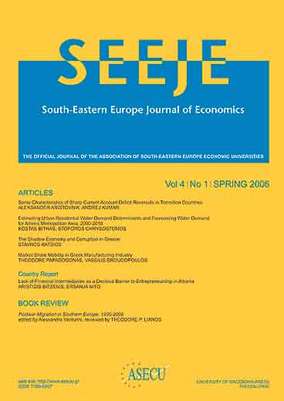Long-term economic development trends in South-Eastern Europe (1850-2003)
Part of : SEEJE ; Vol.1, No.1, 2003, pages 19-40
Issue:
Pages:
19-40
Author:
Abstract:
The article discusses the long-term trends in economic growth of the countries of south-eastern Europe during the period 1850-2003, their evolving level of growth and their place in the European and global economy, their structural changes and the evolution of their infrastructures. The analysis employs primarily the historical and comparative method, based on GDP, GNP and other indicators. The analysis leads to two main conclusions. The first is that in the contemporary period the growth of most of the countries of south-eastern Europe has been held back by their under-development and their low ranking in the European and global economy. The sole exception is Greece, which succeeded after the Second World War in making up lost ground and taking its place in the developed world. The second conclusion lies in the fact that the development of the southeastern European countries was decisively influenced by the international environment: growth was slow when the international environment was unfavourable, more rapid when it was propitious. Their development was also influenced by other factors, such as the slow and incomplete process of industrial and urban (capitalist) transformation, and the unsuccessful experiments in social reform in modern times. The article invites discussion of the reasons for the under-development and relative poverty of south-eastern Europe.
Subject (LC):
Keywords:
South-eastern Europe, economic growth, level of development, economic structure, infrastructures, under-development, development gap
Notes:
Περιέχει πίνακες και βιβλιογραφία, JEL Classification: N13, N14




